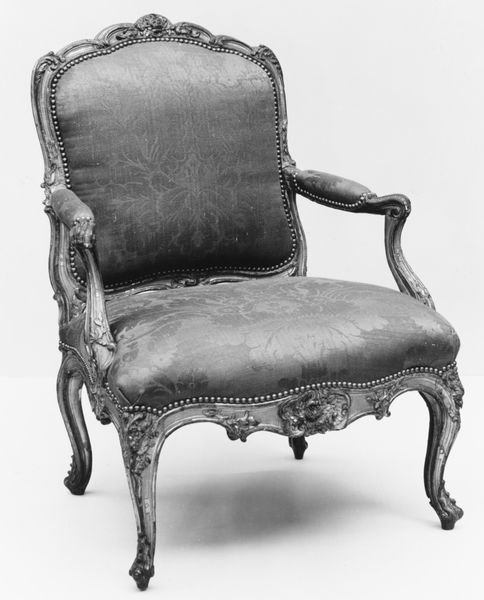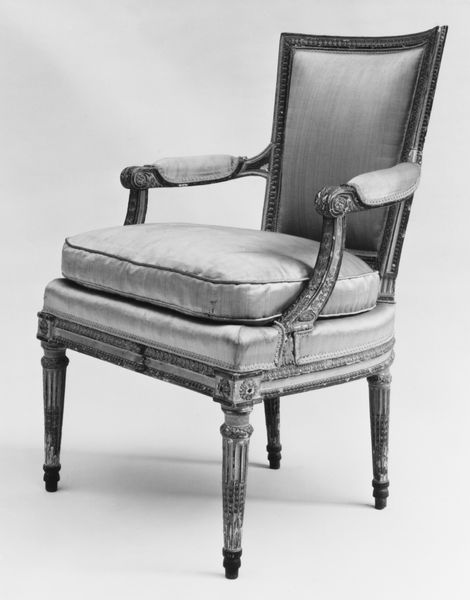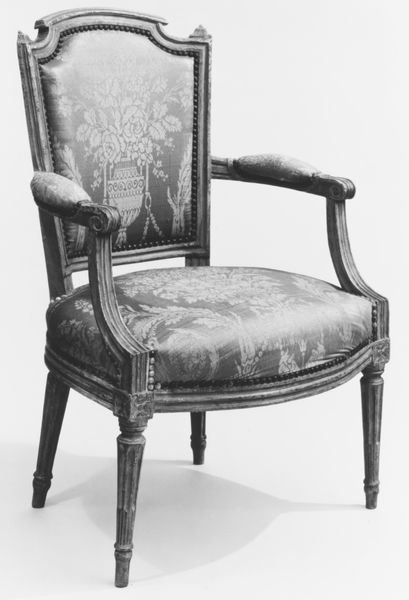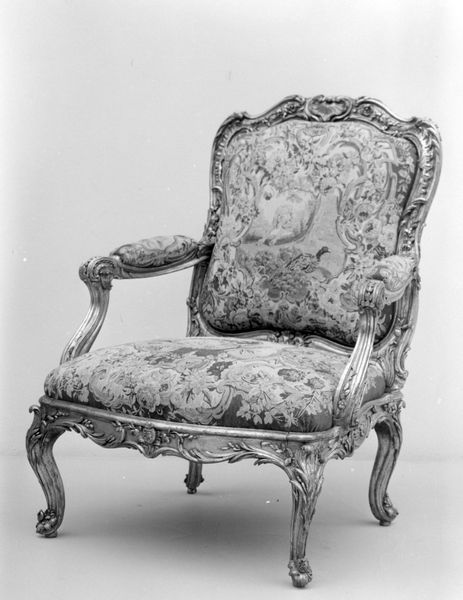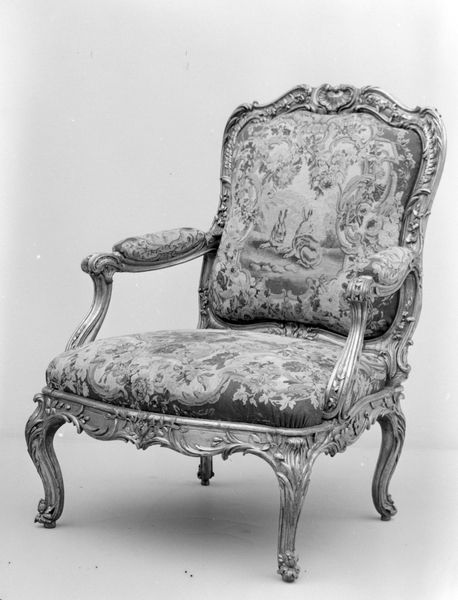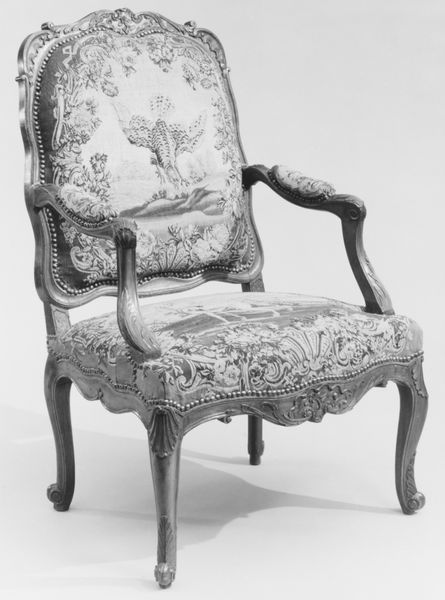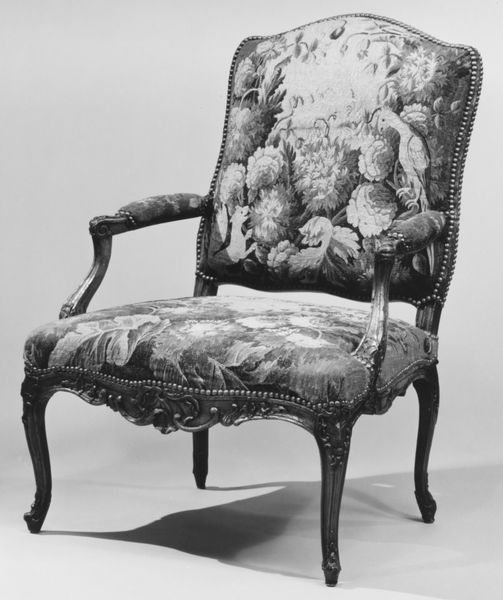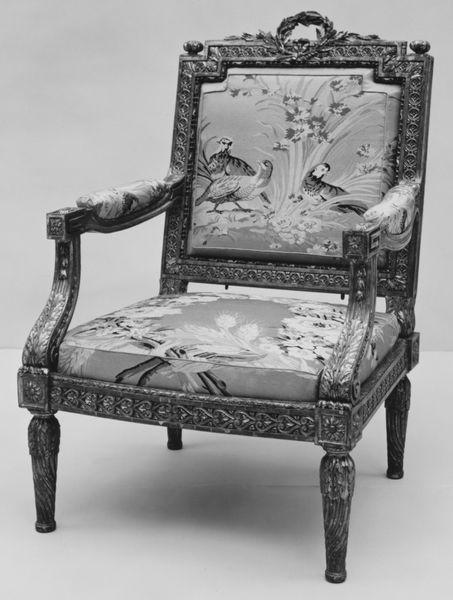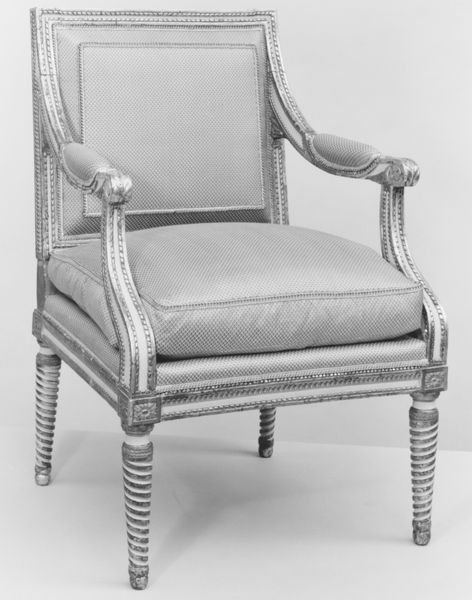
carving, relief, sculpture, wood
#
carving
#
sculpture
#
relief
#
sculpture
#
wood
#
decorative-art
#
rococo
Dimensions: 40 3/8 x 30 1/4 x 24 in. (102.6 x 76.8 x 61cm)
Copyright: Public Domain
Editor: This is "Armchair (one of a pair)," crafted between 1755 and 1765 by Louis I Cresson. It is an intricate piece made of carved wood, showcasing aspects of sculpture and relief. Looking at it, I am struck by the chair's opulence; what statement do you think this chair makes? Curator: Opulence, yes, but I see something more layered here. The Rococo style isn't merely about aesthetics; it's deeply intertwined with the French aristocracy, wouldn’t you agree? This chair was a symbol of power and privilege during a time of increasing social inequality, a time when many people had nothing to sit on at all. Think of it in terms of class. Editor: So you’re saying its beauty is almost… subversive because it highlights the divide? The average person wouldn't be sitting in chairs like this in that time period? Curator: Precisely. How do you interpret its curves and ornamentation when viewed through a lens of societal critique? The artistry is undeniable, yet we cannot divorce it from its function as a status symbol and an instrument of social division. It invites conversation about access and how beauty can both conceal and reveal inequity. Editor: I see what you mean. It’s easy to get lost in the craftsmanship, but it’s essential to consider whose stories were silenced to create such extravagance. I did not think about the chair in those terms at all! Curator: Exactly. And how do we contend with objects like this in a museum context today? What responsibilities do institutions and individuals hold in reckoning with art’s complicated past? Editor: This has given me a lot to think about regarding how we present art. This chair represents more than just artistic skill! Thank you for opening my eyes!
Comments
No comments
Be the first to comment and join the conversation on the ultimate creative platform.
